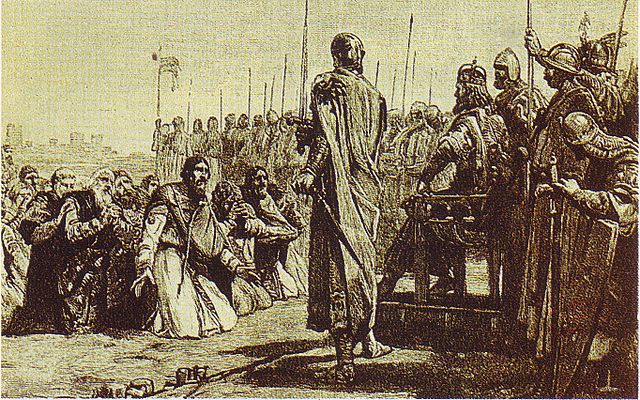The biscione, less commonly known also as the vipera, is in heraldry a charge consisting of a divine serpent in the act of giving birth to a child. It is a historic symbol of the city of Milan, used by companies based in the city.
The bronzed serpent brought to Milan from Constantinople in the 11th century, today in the Basilica of Sant'Ambrogio, is thought to have inspired the biscione.
The Biscione was depicted in the Great Hall of the Angera castle at the end of the 13th century.
A variation of the previous: the arms of Galeazzo Maria Sforza, as inside the Sforza Castle
Coat of arms of the Sforza and Caravaggio houses, as in the German-language book Wernigeroder (Schaffhausensches) Wappenbuch
The Visconti of Milan are a noble Italian family. They rose to power in Milan during the Middle Ages where they ruled from 1277 to 1447, initially as Lords then as Dukes, and several collateral branches still exist. The effective founder of the Visconti Lordship of Milan was the Archbishop Ottone, who wrested control of the city from the rival Della Torre family in 1277.
Depiction of the biscione swallowing a child, the coat of arms of the House of Visconti, on the Archbishop's palace in Piazza Duomo in Milan, Italy
1 March 1162, Ottone Visconti is the first Milanese appearing in the list of authorities surrendering to the Barbarossa after the capitulation of the city (19th-century engraving)
21 January 1277, after the victory obtained against the Della Torre in Desio, Archbishop Ottone Visconti enters Milan (14th-century fresco in the Rocca Borromeo di Angera)
Petrarch lived in Milan from 1353 to 1361, providing first-hand accounts from the Visconti court in his letters (portrait by Altichiero da Verona)








